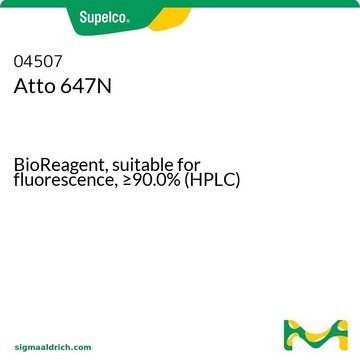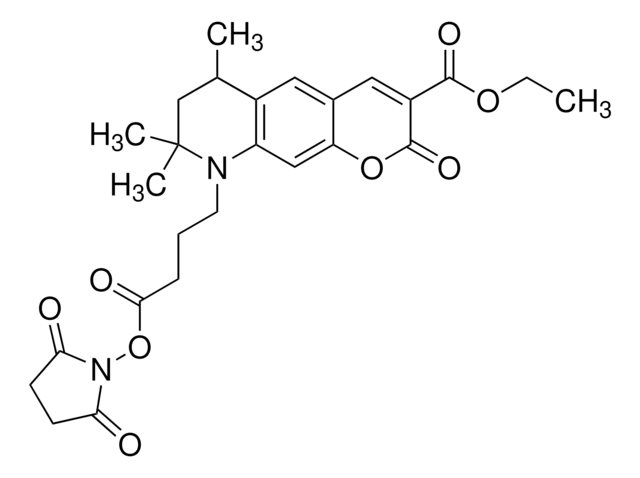41051
Atto 488
BioReagent, suitable for fluorescence, ≥90% (HPLC)
About This Item
Productos recomendados
Línea del producto
BioReagent
Nivel de calidad
Análisis
≥90% (HPLC)
fabricante / nombre comercial
ATTO-TEC GmbH
λ
in methanol: water (1:1) (with 0.1% perchloric acid)
Absorción UV
λ: 501-507 nm Amax
idoneidad
suitable for fluorescence
temp. de almacenamiento
−20°C
Descripción general
Die Abklingzeit der Fluoreszenz beträgt 3.2 ns.
Aplicación
Información legal
Código de clase de almacenamiento
11 - Combustible Solids
Clase de riesgo para el agua (WGK)
WGK 3
Punto de inflamabilidad (°F)
Not applicable
Punto de inflamabilidad (°C)
Not applicable
Equipo de protección personal
Eyeshields, Gloves, type N95 (US)
Certificados de análisis (COA)
Busque Certificados de análisis (COA) introduciendo el número de lote del producto. Los números de lote se encuentran en la etiqueta del producto después de las palabras «Lot» o «Batch»
¿Ya tiene este producto?
Encuentre la documentación para los productos que ha comprado recientemente en la Biblioteca de documentos.
Los clientes también vieron
Artículos
Fluorescence lifetime measurement is advantageous over intensity-based measurements. Applications include fluorescence lifetime assays, sensing and FLI.
Nuestro equipo de científicos tiene experiencia en todas las áreas de investigación: Ciencias de la vida, Ciencia de los materiales, Síntesis química, Cromatografía, Analítica y muchas otras.
Póngase en contacto con el Servicio técnico





